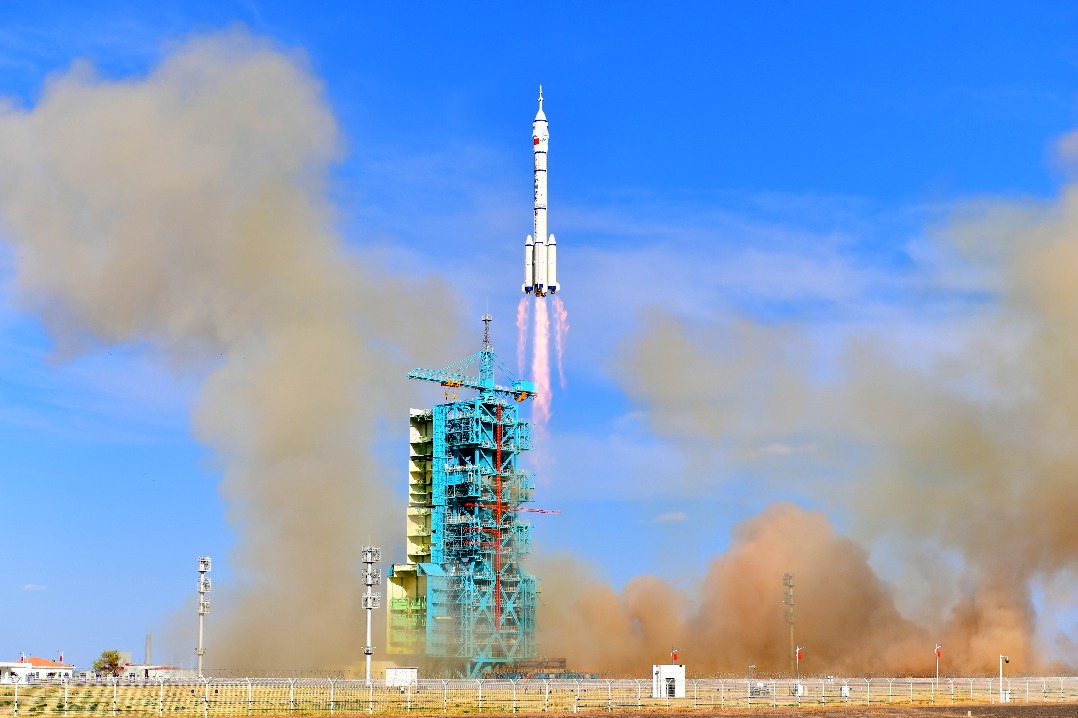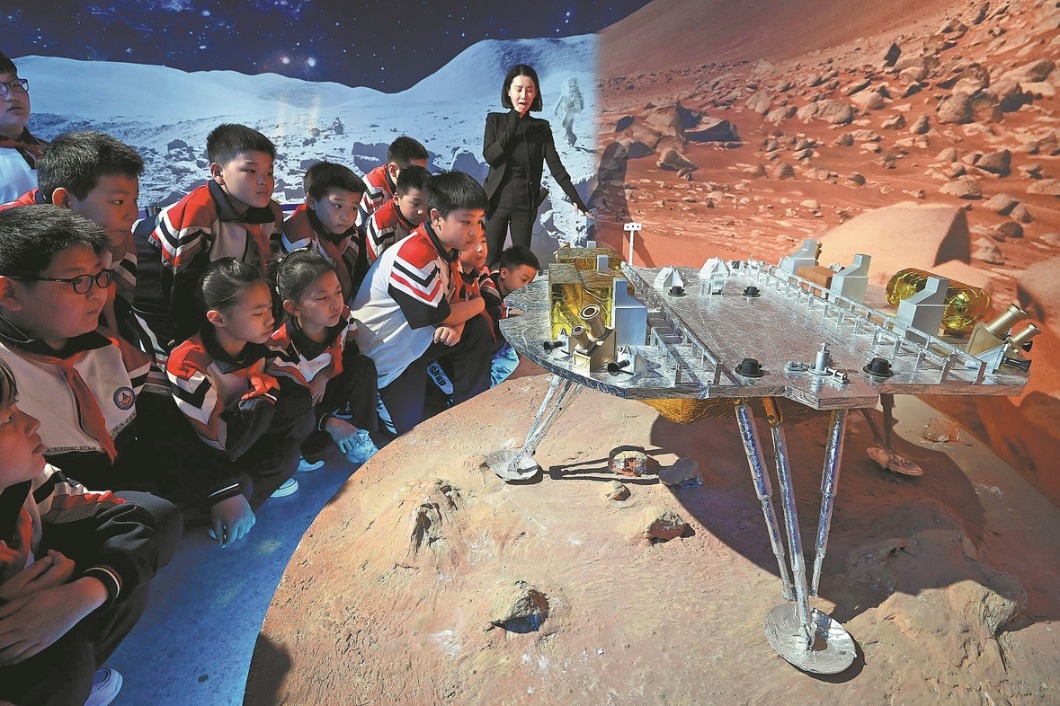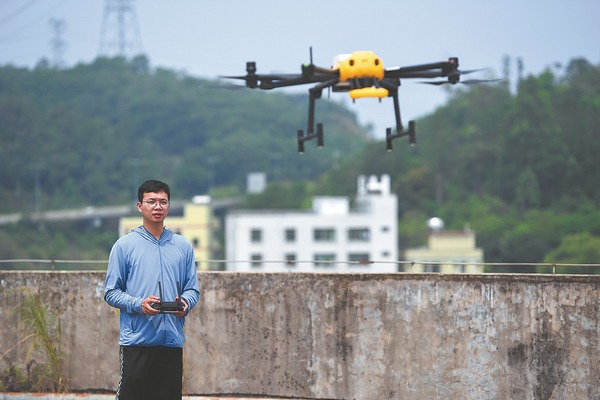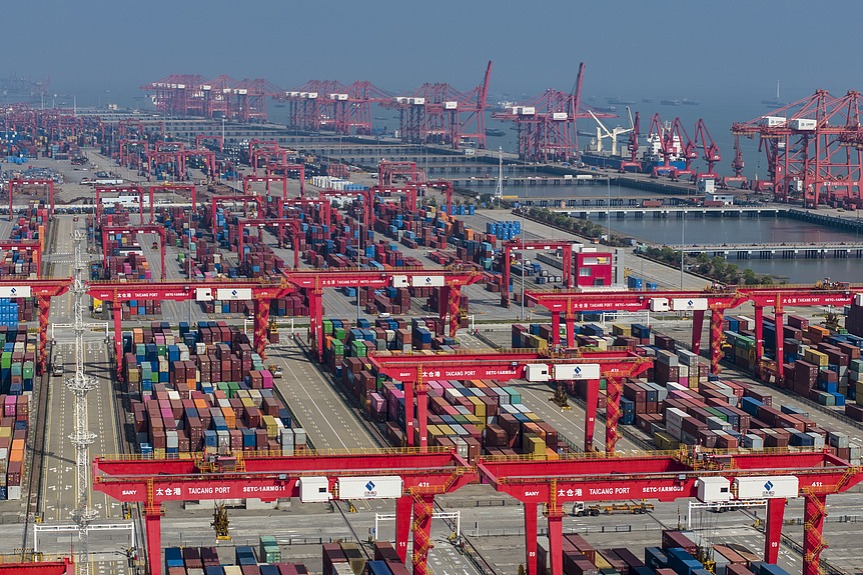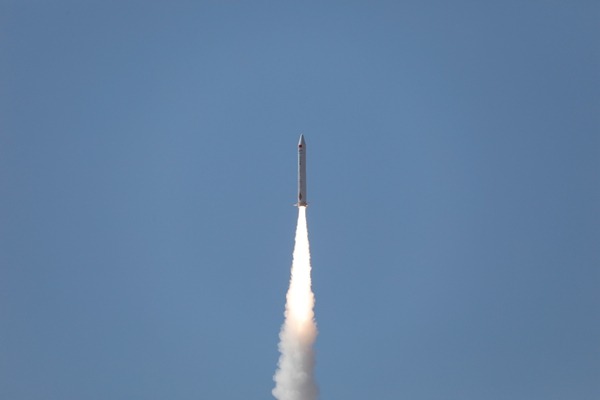Commercial space missions boast vibrant industry

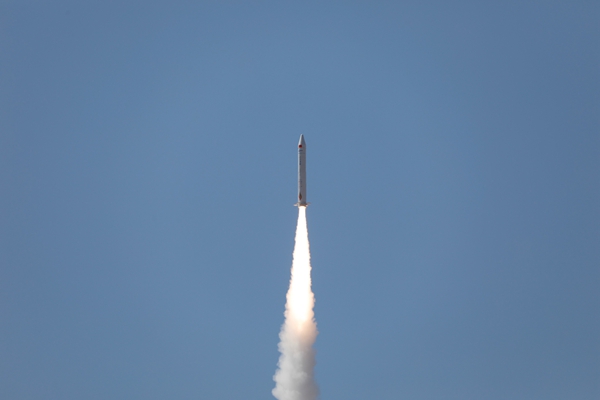
In 2016, China designated April 24 as its Space Day to commemorate its achievements in space exploration. The aerospace industry has boomed in recent years. China began its tryst with commercial space launches in November 2024, when it successfully launched a Long March 12 carrier rocket from the Hainan commercial spacecraft launch site in Wenchang, South China's Hainan province. That was a milestone as it established China's commercial spacecraft launch site's capability to execute launches.
Commercial space activities are market-driven, aimed at developing, manufacturing, launching, and applying space technology and services through profitable commercial activities. Technological breakthroughs, reduced costs and promotion by the government have led to the growth of the commercial space industry.
The United States is the leader in this sector with a growing market size. A report by the US-based Satellite Industry Association showed that "during 2023, the overall global space economy generated revenue of $400 billion. The commercial satellite industry continued to be dominant, increasing to $285 billion and accounting for 71 percent of the world's space business".
The active participation by and innovation of private enterprises has helped boost the US' commercial space market. For example, commercial space giant SpaceX has made achievements in rocket launches, satellite manufacturing, and satellite internet. The US also leads in commercial space investment and financing. According to US-based Space Capital, a venture capital firm specializing in space-based technologies and their applications, the US accounted for 51 percent of equity investment in the space economy. The commercial space market in the US has vitality and attractiveness.
China entered the commercial space sector late but it has developed rapidly since 1985 when it announced that the Long March series of carrier rockets would be available for international satellite launch services.
Now, the booming space industry is contributing to China's high-quality economic development. With policy support and robust market demand, China's commercial space industry has gained its share of the international market. According to the China Astronautics Association for Quality, China's commercial space sector has grown from 0.6 trillion yuan ($82.04 billion) in 2018 to 1.9 trillion yuan in 2023, with an average annual growth rate of 23 percent. It is expected that the growth will continue in the coming years.
Commercial space emphasizes technological innovation to drive industrial innovation, and it plays a crucial role in developing new quality productive forces and building a strong space nation. After decades of endeavor, China is ready to accelerate the development of the commercial space industry. Commercial space appeared in China's 2024 government work report as a new growth engine and a key driver of high-tech development in 2025.
China's commercial satellite and rocket companies have proliferated rapidly in recent years, but the lack of commercial spaceports has hampered the growth of the commercial space industry. The launch in Wenchang means that China has completed the full industrial chain of the commercial space industry, from satellite and rocket manufacturing, commercial launch site testing and launching, and satellite data application services.
China's first civilian-built space launch site in Hainan employs a flexible and efficient commercial mechanism for mission organization and management, which will promote social innovation.
The inaugural launch utilized a remote measurement and control system. The No 2 launch pad, executing the maiden mission, is China's first versatile launch pad designed for medium-lift liquid-fuel rockets, offering multi-mission adaptability, rapid turnaround, and high compatibility, which shows China's space industry has improved in cost efficiency and competitiveness.
The launch site can execute high-cadence and cost-effective launch missions, providing a stable and reliable platform for commercial rocket and satellite companies. The progress in China's launch capability will support large-scale low-Earth orbit constellation deployment missions for civilian and commercial space infrastructure projects.
The Long March 12 carrier rocket is China's first 3.8-meter-diameter launch vehicle and most capable single-core rocket, coupled with its modular design, which optimizes payload and cost performance.
Another innovation is streamlining pre-launch operations by assembling, testing and transporting the rocket lying flat. This has advantages in cost efficiency, security, accessibility and turnaround because the design eliminates the need for vertical assembly building, reduces high-altitude work, makes maintenance and modification easier, enhances efficiency, and enables high cadence potential.
The Long March 12 carrier rocket is poised to enter a high-frequency launch phase and will enhance China's ability to deploy satellites into sun-synchronous orbits and assemble low-Earth orbit constellation networking.
China launched a Long March 8 carrier rocket from the No 1 launch pad at the Hainan commercial spacecraft launch site in March, sending 18 satellites into space.
This month, the Hainan government has bolstered policy support to expedite the development of commercial space launch capabilities, including establishing an innovative platform for rocket recovery and reusability.
Furthermore, China has continued to expand its satellite internet constellation projects, aiming to provide global broadband coverage. The country's commitment to reducing launch costs and increasing the frequency of commercial missions has positioned it as a formidable player in the global space industry by 2025.
Continuous advancement will bolster China's space transportation and bring new technology, industry, and business models to the commercial rocket sector.
The author is a research fellow at the Charhar Institute and a member of the Chinese Institute of Command and Control.
The views don't necessarily reflect those of China Daily.
If you have a specific expertise, or would like to share your thought about our stories, then send us your writings at opinion@chinadaily.com.cn, and comment@chinadaily.com.cn.
















